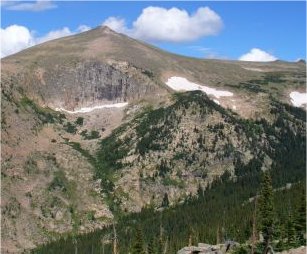
July Editorial
Hot Rocks keep North America afloat

July Editorial
Hot Rocks keep North America afloat
|
|
Without the heat within Earth's rocky crust most of North America would sink deep undersea, say scientists at the University of Utah. Professor David Chapman and his colleagues from the geology and geophysics department have recently concluded a study on the effect of heat in the mantle zone on the buoyancy of rocks which make up the continents. The research, which was published in the June issue of the Journal of Geophysical Research-Solid Earth, showed that temperature difference within the Earth's crust and upper mantle is responsible for about half the elevation of any given point in North America. It is generally believed that the height of any particular piece of land is due to movements of the tectonic plates of the Earth's crust. This movement results in volcanism, mountain-building collisions when plates come into contact, and sinking inland basins as they stretch apart. Geologists agree that the composition of the rock in any given place has a lot to do with its elevation since denser the rocks, the heavier they are. But Hasterok and Chapman argue that tectonic forces act through the composition and temperature of the rocks they move. So as crustal plates collide to form mountains like the Himalayas, the mountains rise because the collision makes less dense rock deep in the crust get thicker and warmer, and therefore more buoyant, so it bobs up, lifting the mountains on top. In their study the group first analyzed the results of previous experiments in which scientists measured seismic waves moving through the Earth's crust after explosions. The waves travel faster through colder, denser rock, and slower through hotter, less dense rock. The group used published data in which various kinds of rocks were measured in the laboratory for both their density and how fast seismic waves travel through them. The combined data allowed them to calculate how rock density varies with its depth in the crust. Consequently, they are able to tell how much of any area's elevation is due to the thickness and composition of its rock, and how much is due to that rock being hot and bouyant. The Earth's crust is, on average, 4 miles thick beneath the oceans and 24 miles thick under the continents. The crust and the layer just beneath, the upper mantle (together the two are known as the lithosphere), has a maximum thickness of about 155 miles. The lithosphere is broken into "tectonic plates" that slowly drift, changing the shapes, locations and configurations of continents over a long period. Elevation also can change from the heating and expansion of rocks that makes them more buoyant - a phenomenon named "thermal isostasy" that explains why the hot mid-ocean ridges for example are much higher than the cold plains around. Using ice as an example we can illustrate this phenomenon. When water freezes it expands, creating ice. Because of the expansion, ice is much less dense than water and so it floats. In the same way rocks heated deep underground expand and become more buoyant, lifting the land above. Removing the effect of rock density, the group was able to estimate the effect of heat on the elevation of different parts of North America. This shows clearly that if not for the heat from the mantle zone, most of North America would be deep underwater. For example, New York City would be 1,427 feet under the Atlantic, Boston would be 1,823 feet under and Los Angeles would be a stunning 3,756 feet beneath the Pacific. The only places above water would be the tops of the Rocky Mountains between Salt Lake and Denver. Interestingly, some locations which sit on colder than average rocks would actually be elevated further. So good news for skiers in Seattle who would see their pistes soar to 5,949 feet. The question is how would rock cooling affect continental North America? Would the nation plunge underwater before it had time to draw breath? Hardly. The cooling process would be immensely slow and it would take billions of years for the effect to be noticeable. So America is not about to sink, though, of course global warming threatens to submerge its coastal cities (but that is another story). However, the research does have a significant implication for studies of new volcanic activity - giving us plenty of warning (yes, millions of years) of what is literally coming up in future. More importantly, the new discovery will make it easier to identify areas where crustal rocks are unusually hot due to higher-than-average concentrations of radioactive isotopes. |
| _______________________________ | ||||
| Home | | | Shopping | | | Database |
© Biscuit Software 2004-2015
All rights reserved